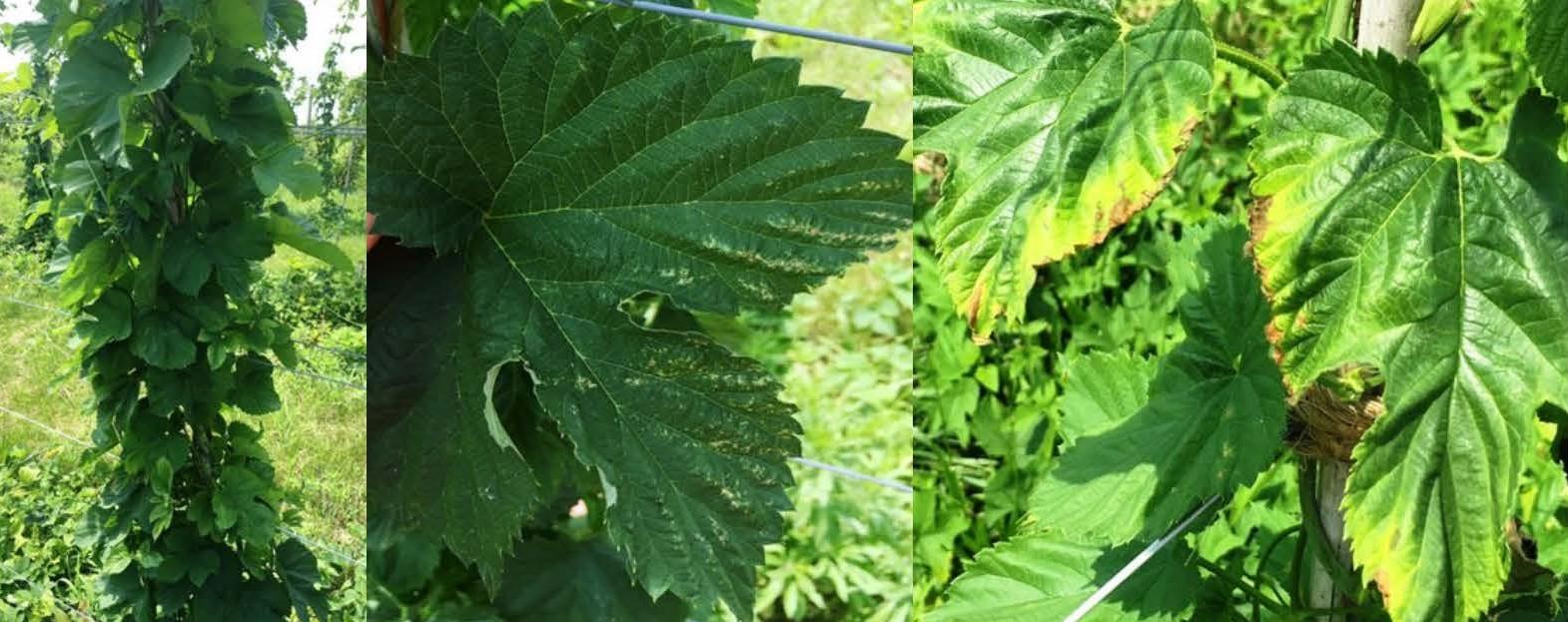Potato Leaf Hoppers on Hops
I do not usually look at hops very much as only a few farms have them, but they are becoming a bit more common in the last 10 years (Fig. 1). Visiting two farms withy hops I saw marginal leaf damage (Fig. 2) on some leaves (found some thrips too) and then marginal leaf scorch on others (Fig. 3). When looking on the underside of these leaf-scorched damaged leaves, I found many potato leaf hopper nymphs (no adults) (Fig. 4) on one farm and only a few on the other. Potato leafhoppers prefer warm, dry conditions and are common in southern states where they overwinter; leaf hoppers do not overwinter in our area. Potato leaf hoppers (PLH) move into our area via storm systems from the south. PLH are generally seen in early to mid-May, but are arriving on average in our area 7-10 days earlier than it was just 20-30 years ago. Females lay one to two eggs per day in the leaf stems or veins of hops and 1 week to 10 days later nymphs emerge. Nymphs reach maturity in about 2 weeks. Leafhoppers are capable of very rapid population increases so scouting is important to control the pest to avoid damage to hops. Alfalfa is the primary host for the potato leafhopper and once the first cutting of that forage is done, PLH will move into other susceptible crops such as potato and hops.

